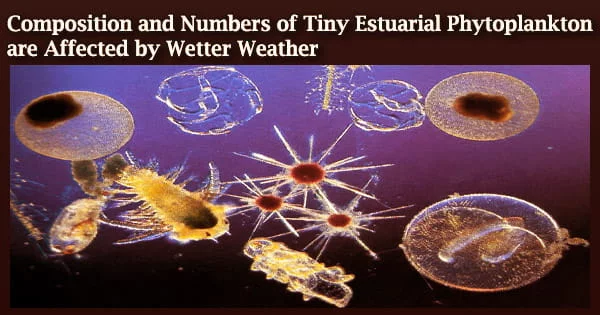According to North Carolina State University research, the number and make-up of picophytoplankton in the Neuse River Estuary are both impacted by extreme weather conditions including hurricanes and excessive precipitation.
The research is a first step in figuring out how an estuarine environment might change as a result of a wetter climate. Any phytoplankton smaller than three micrometers is referred to as a picophytoplankton.
The ocean ecology is built on phytoplankton. They produce oxygen as part of the photosynthesis process, which accounts for over half of the oxygen in the planet. However, certain phytoplankton can also be toxic, harming ecosystems or killing fish.
Picophytoplankton are understudied in estuarine settings despite the fact that they are abundant there and are highly researched as a component of the ocean’s ecosystem and food chain.
“Picophytoplankton are important primary producers in aquatic ecosystems,” says Ryan Paerl, assistant professor of marine, earth, and atmospheric sciences and lead author of the research.
“They provide food for larger microorganisms, play a role in carbon fixation and cycling, and are sentinels of good ecosystem health. So understanding the effect of moderate to extreme precipitation events on these tiniest members of the ecosystem gives us a more complete sense of impacts of storms on estuaries and the life within them.”
Plankton comes in a variety of forms. The tiny, plant-like creatures known as phytoplankton are also referred to as algae or microalgae. Because they can use sunlight as energy and grow through the process of photosynthesis, phytoplankton are the most potent ocean organisms of all the plankton.
Picophytoplankton make up an average of 40% of all phytoplankton biomass in the Neuse River estuary, and that number can be over 70% during stable warm summer months. And these picophytoplankton are really impacted by storms even those that aren’t hurricane strength. The result is a shift in concentration and population that could have long-term effects on food webs and biochemistry in the estuary.
Assistant Professor Ryan Paerl
From July 2017 to December 2018, Paerl and his team studied the numbers and composition of picophytoplankton in the Neuse River Estuary, a significant portion of the second-largest estuary in the lower U.S. They collected monthly or bimonthly samples at 11 sites along the estuary and used flow cytometry to determine the quantity and composition of picophytoplankton.
Picophytoplankton concentrations of 1 million cells per milliliter were seen during “stable” conditions of warm, bright weather. However, the estuary’s picophytoplankton population was drastically reduced by at least a thousand times, to 1,000 cells per milliliter or fewer, as a result of both general increases in precipitation and the arrival of Hurricane Florence in September 2018.
Following these severe weather events, picophytoplankton’s composition also shifted, shifting from predominantly cyanobacteria to primarily picoeukaryotic phytoplankton (PEUK).
“We saw that precipitation and resulting increased river flow acts like a hose on these picophytoplankton, flushing them out of the estuary,” Paerl says.
“Then the PEUKs have mini-blooms after the flushing events. They do really well and grow very quickly after disturbances. The good news for the food web is that PEUKs often can produce excellent nutrients, like fatty acids, and PEUKs are desirable prey so their growth and consumption could be giving the food web a quick shot in the arm after these events.”
The researchers believe that the PEUKs may play a larger role in estuarine ecosystems than they do at the moment as recent climate forecasts indicate wetter weather in the southeastern United States.
“Picophytoplankton make up an average of 40% of all phytoplankton biomass in the Neuse River estuary, and that number can be over 70% during stable warm summer months,” Paerl says.
“And these picophytoplankton are really impacted by storms even those that aren’t hurricane strength. The result is a shift in concentration and population that could have long-term effects on food webs and biochemistry in the estuary.”
The work appears in Scientific Reports and was performed in partnership with the UNC-Chapel Hill Institute of Marine Sciences (UNC-IMS) Neuse River Estuary Modeling and Monitoring Project (ModMon), which is led by Hans Paerl and supported by the North Carolina Department of Environmental Quality, as well as the Lower Neuse Basin Association. Joel Sanchez, a Ph.D. candidate at NC State right now, and Rebecca Venezia, a former graduate student, both contributed to the project.





